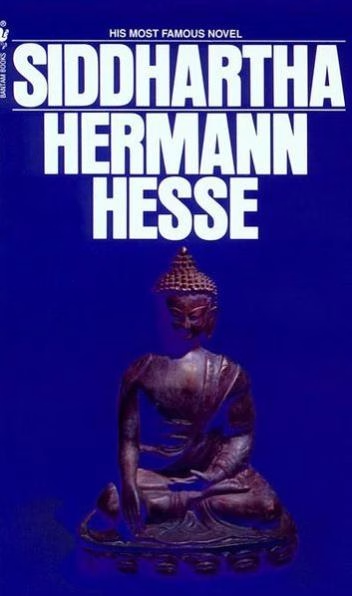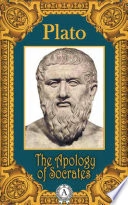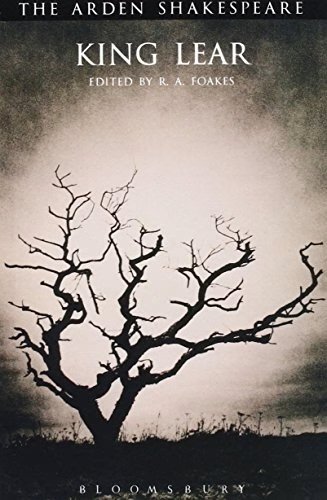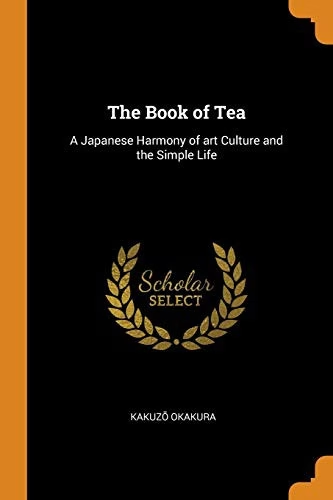Plot Summary:
The Brahman’s Son
Siddhartha, a handsome and intelligent young man, grows up as the son of a respected Brahman in ancient India. He masters all the rituals and teachings of his faith, earning the admiration of his family and his best friend, Govinda. Despite his outward perfection and the love he receives, Siddhartha feels a deep spiritual discontent. The rituals feel empty, and the wisdom of his elders fails to quench his profound thirst for true understanding and inner peace. He questions the nature of the self (Atman) and the universe, believing that true enlightenment cannot be found in the prescribed doctrines. Driven by this inner turmoil, he decides to leave his comfortable home to become a Samana, a wandering ascetic who seeks liberation through self-denial. His loyal friend, Govinda, resolves to follow him. After a silent, overnight standoff, Siddhartha’s father reluctantly gives his blessing, and the two friends depart.
With the Samanas
Siddhartha and Govinda spend three years with the Samanas, subjecting themselves to extreme physical hardship. Siddhartha learns to fast for long periods, withstand pain, and control his breathing. He practices meditation to escape his self, entering states where he becomes one with animals and nature. Yet, this path also proves unsatisfying. He realizes that these practices are merely temporary escapes from the self, no different in essence from a drunkard’s brief stupor. He concludes that the Samanas’ path, like the Brahmans’, does not lead to true salvation or wisdom. During this time, rumors spread of a new enlightened one, Gotama the Buddha, who has overcome the suffering of the world. Intrigued, Siddhartha convinces Govinda that they must seek him out and hear his teachings. In a display of the skills he has learned, Siddhartha hypnotizes the eldest Samana to secure their peaceful departure.
The Appearance of the Buddha
Siddhartha and Govinda travel to the grove of Jetavana, where they find the Buddha and his disciples. They listen to Gotama’s sermon on the Four Noble Truths and the Eightfold Path. The teaching is clear, logical, and profound. Govinda is captivated and immediately asks to be accepted into the Buddha’s community of monks. Siddhartha, however, remains skeptical. While he admires Gotama’s perfect peace and recognizes him as a truly enlightened man, he believes the Buddha’s wisdom came from his own direct experience, not from doctrine. He concludes that enlightenment is an individual realization that cannot be taught through words.
In a private conversation, Siddhartha respectfully explains his reasoning to the Buddha. He praises the logic of the teachings but points out that the Buddha’s own moment of enlightenment remains a personal secret, an experience that cannot be conveyed. The Buddha, with a serene smile, warns him against “too much cleverness” but acknowledges his point. Siddhartha and Govinda part ways for the first time, with Govinda choosing the path of a follower and Siddhartha resolving to continue his search alone, trusting only in himself and his own experience.
The Great Awakening
Leaving the grove, Siddhartha feels a profound transformation. He is no longer a Brahman’s son or a Samana; he is simply Siddhartha, an individual awakened to the world. For the first time, he sees the physical world not as an illusion (Maya) to be overcome, but as a beautiful, vibrant, and mysterious reality. He resolves to learn from the world of the senses, from direct experience, rather than from abstract teachings. This decision marks the end of his youth and the beginning of a new life. He crosses a river with the help of a kind ferryman, who prophetically tells him that “everything comes back.” Feeling a surge of desire and curiosity, Siddhartha travels toward a large city.
The World of the Senses
On the outskirts of the city, Siddhartha sees Kamala, a beautiful and renowned courtesan. He is instantly captivated and sets a new goal: to learn the art of love from her. After cleaning himself up, he presents himself to Kamala. Amused by the former ascetic, she tells him he will need fine clothes, shoes, and money to win her affection. With her guidance, Siddhartha meets Kamaswami, a wealthy merchant. Using the skills of focus and patience he learned as a Samana, Siddhartha impresses the merchant and is hired.
For many years, Siddhartha lives a life of material wealth and sensual pleasure.
* He becomes a successful and wealthy partner to Kamaswami, though he always views business as a game and never allows it to touch his soul.
* He becomes Kamala’s lover and friend, mastering the arts of physical love and learning the ways of the world from her.
* He indulges in fine food, wine, and gambling, gradually forgetting his spiritual past.
Despite his success, Kamala astutely observes that he remains a Samana at heart and is incapable of true love. Over time, the material world ensnares him. His spiritual voice grows quiet, and he becomes lazy, discontented, and addicted to gambling as a way to express his contempt for riches. He is trapped in the meaningless cycle of desire and disgust known as Sansara.
By the River
One night, after a particularly hollow evening with Kamala, Siddhartha has a dream that her pet songbird, which she keeps in a golden cage, has died. He awakens horrified, realizing the dream symbolizes the death of his own inner voice. Overcome with disgust for his empty life, he abandons his wealth, his home, and the city, walking away without a word.
He wanders until he reaches the same river he crossed years before. In utter despair, believing his life to be a complete failure, he contemplates suicide. As he is about to let himself fall into the water, he hears a sound from deep within his soul: the sacred syllable “Om.” The sound awakens his spirit, reminding him of the indestructible, divine essence of life. He collapses at the foot of a tree and falls into a deep, restorative sleep. When he awakens, he feels completely reborn, washed clean of his past life. He finds his old friend Govinda, now a graying monk, watching over him. Govinda fails to recognize the richly dressed man, and after a brief, poignant reunion, they part ways again.
The Ferryman
Siddhartha, now renewed, feels a deep love for the river that saved him. He seeks out the ferryman, Vasudeva, who took him across so long ago. Vasudeva, a simple and serene man, recognizes him and invites Siddhartha to live and work with him as his assistant. Siddhartha accepts, and a new life of quiet contemplation begins. He learns from Vasudeva, but his greatest teacher is the river itself. By listening intently to its many voices, he learns its deepest secrets:
* The nature of time: The river is everywhere at once—at its source, its mouth, and every point in between. Siddhartha realizes that past, present, and future are illusions; only the present moment exists.
* The unity of life: He hears all the voices of creation in the river—joy, sorrow, anger, laughter—and understands that they are all part of a single, unified song.
Years pass peacefully. One day, Kamala, who has become a follower of the Buddha, is traveling to see Gotama on his deathbed. Near the ferry, she is bitten by a venomous snake. Vasudeva finds her and brings her to their hut. In her final moments, she is reunited with Siddhartha and reveals that the young boy with her is his son. After she dies, Siddhartha is left to care for the child.
The Son
Siddhartha’s son, also named Siddhartha, is a spoiled and resentful child. He despises the simple life at the ferry and rebels against his father’s quiet patience and love. Siddhartha loves his son deeply and painfully, but he cannot reach him. He tries to win the boy’s affection, but the son only responds with anger and contempt. Vasudeva wisely advises Siddhartha that the boy must be allowed to follow his own path, just as Siddhartha did, even if it leads to suffering.
Siddhartha cannot bring himself to let go. The son’s defiance escalates until, one day, he screams his hatred for his father, steals their money, and flees across the river, disappearing toward the city. Heartbroken, Siddhartha follows him, but eventually realizes the pursuit is futile. Standing before Kamala’s old pleasure garden, he understands his son must find his own way and that his painful, clinging love was a wound he had to experience. He feels the same pain his own father must have felt when he left home. Returning to the ferry, he finally lets his son go.
Om
The wound of his son’s departure burns in Siddhartha for a long time. Yet, through this pain, he learns to understand and love the “childlike” people of the world, seeing their passions and struggles not with disdain but with empathy. One day, as his pain peaks, he looks into the river and sees his own reflection merge with that of his father. The river seems to laugh at the endless cycle of fathers and sons, of suffering and seeking.
He confesses his pain to Vasudeva, and together they sit and listen to the river. In its thousand voices, Siddhartha hears the unity of all things. He hears all of creation—all joy and suffering, all life and death, all good and evil—merge into a single sound, the word of perfection: Om. At this moment, he stops fighting his fate and achieves true enlightenment. The cheerfulness of perfect wisdom illuminates his face. Vasudeva, seeing that his friend has found peace, smiles and departs into the forest, “into the oneness.”
Govinda’s Return
Years later, Govinda, still a searching monk, hears of a wise old ferryman and comes to the river. He does not recognize his old friend, Siddhartha, and asks for a piece of wisdom to help him on his path. Siddhartha explains that wisdom cannot be taught in words, as the opposite of every truth is also true. Govinda is confused, still bound by doctrine. Seeing his friend’s enduring search, Siddhartha tells him to kiss him on the forehead.
When Govinda does so, he does not see Siddhartha’s face but a timeless, flowing river of faces—a fish, a murderer, a lover, a newborn, gods, and animals. He sees all of life, birth, and death in a single, simultaneous vision. And over all these shifting forms is a single, unchanging smile—the same smile of the perfected one he saw on Gotama the Buddha. In that moment, Govinda finally glimpses the unity of all existence that Siddhartha has found. He bows deeply before his friend, who has become a true vessel of enlightenment.
Characters
Siddhartha
The protagonist on a lifelong quest for spiritual enlightenment. Siddhartha’s journey is defined by his refusal to accept any pre-packaged truth or doctrine. He evolves through distinct stages: a questioning Brahman, a self-denying ascetic, a worldly hedonist, and finally, a wise ferryman. His core conflict is the struggle to silence his intellectual, “clever” mind and learn instead through direct, lived experience. He is proud, patient, and intensely focused, but must ultimately learn humility, empathy, and love to achieve the oneness he seeks. His final enlightenment is not an escape from the world, but a total, loving acceptance of it.
Govinda
Siddhartha’s loyal childhood friend and spiritual foil. Where Siddhartha is an individualist who forges his own path, Govinda is a seeker who believes enlightenment can be found by following a master and a doctrine. He is devout, humble, and steadfast, but remains perpetually searching, never quite achieving the profound peace his friend finds. He represents the conventional religious path—a valid and noble pursuit, but one that, for some, may always remain a step removed from direct, personal truth. His final vision through Siddhartha shows that even a lifelong follower can be granted a glimpse of true oneness.
Kamala
The beautiful and intelligent courtesan who becomes Siddhartha’s teacher in the art of love and worldly life. She is not merely a sensual figure; she possesses a deep understanding of human nature and recognizes Siddhartha’s spiritual core even when he is lost in materialism. Kamala represents the world of the senses, which Siddhartha initially scorns but eventually learns is a necessary part of his journey. Her path also evolves, as she eventually renounces her life of pleasure to become a follower of the Buddha, showing that the path to peace is open to all.
Vasudeva
The simple, enlightened ferryman who serves as Siddhartha’s final and most important guide. Vasudeva has achieved wisdom not through books or teachings, but by listening to the river. He embodies the state of perfect harmony, patience, and egolessness. He does not “teach” Siddhartha in a conventional sense; rather, he creates the space for Siddhartha to learn for himself. As a character, Vasudeva represents the idea that the most profound wisdom is often found in simplicity and a deep connection to the natural world. He is a perfected being, one who has merged with the unity of existence.
Gotama (The Buddha)
The enlightened one whose teachings attract thousands, including Govinda. Gotama is portrayed as a figure of perfect serenity and wisdom. He represents the pinnacle of enlightenment achieved through a structured path and doctrine. For Siddhartha, he is both an inspiration and a point of departure. While Siddhartha deeply respects Gotama as a holy man who has “found the way,” he also realizes that the Buddha’s personal experience of enlightenment is untransferable. Gotama serves as the catalyst that forces Siddhartha to trust his own inner voice above all others.
Siddhartha’s Son
The son, also named Siddhartha, represents the final, painful worldly attachment that his father must confront. Raised in luxury, the boy is rebellious and cruel, rejecting his father’s simple life and love. His presence forces Siddhartha to experience a deep, irrational, and human love, filled with pain and suffering. This experience is crucial, as it shatters Siddhartha’s last vestiges of spiritual detachment, teaching him empathy and allowing him to understand the pain he once caused his own father. The son’s eventual flight is the wound that, once healed, blossoms into Siddhartha’s final enlightenment.
Core Themes
The Individual Path to Enlightenment
The central theme of the novel is that true spiritual wisdom cannot be gained by following a teacher, a doctrine, or a set of rules, but must be discovered through personal experience. Siddhartha explores and rejects several established paths: the rituals of Brahmanism, the self-denial of the Samanas, and even the perfect teachings of the Buddha. He concludes that while these paths may work for others, his own enlightenment can only be realized by listening to his inner voice and learning directly from the world—from love, from sin, from work, and from nature.
The Unity of All Existence
Siddhartha’s ultimate realization is the oneness of all things. This concept, symbolized by the sacred word “Om,” posits that the division between good and evil, sinner and saint, life and death, and past and future is an illusion. The river becomes his teacher on this subject, its constant flow and multifaceted voices showing him that all of existence is a single, interconnected, and perfect whole. Govinda’s final vision, where he sees all of creation flowing through Siddhartha’s face, is the ultimate expression of this theme.
The Flaw of Words and Intellect
Throughout his journey, Siddhartha grows to distrust words and abstract thoughts as vehicles for truth. He tells Govinda that wisdom, unlike knowledge, cannot be conveyed verbally; when articulated, it always sounds like foolishness. He realizes that doctrines, by their very nature, present a one-sided view of a world that is never one-sided. He comes to prefer “things”—the stone, the tree, the river—over concepts, because they exist fully and authentically, beyond the limitations of language. His journey is a movement away from the intellectual mind and toward intuitive, experiential understanding.
Sansara and Nirvana as One
Initially, Siddhartha sees the world in dualities: the spiritual versus the material, timeless Nirvana versus the painful cycle of earthly life (Sansara). He first tries to escape Sansara through asceticism and later immerses himself in it completely in the city. His final enlightenment, however, is the realization that this duality is false. He understands that the divine is not separate from the world but present within every part of it—in sin, in suffering, in love, and in decay. Perfection is not a destination to be reached but a reality to be recognized in every moment. He learns to love the world as it is, not as he wishes it to be.
Plot devices
The River as a Central Symbol
The river is the most powerful and persistent symbol in the novel, functioning as a setting, a character, and Siddhartha’s ultimate teacher. It represents the flow of time, showing that past, present, and future are a unified, continuous stream. Its many voices symbolize the unity of all life, containing every aspect of existence—joy, suffering, birth, and death. The river is the site of Siddhartha’s spiritual crises and rebirths: it is where he contemplates suicide and is saved by “Om,” and it is where he sits and listens until he achieves his final enlightenment. It embodies the living, breathing wisdom that Siddhartha cannot find in doctrines.
Allegorical Journey
Siddhartha’s physical journey is an allegory for his spiritual progression. Each location corresponds to a different philosophical stage. His father’s home represents the comfort and limitations of tradition (Brahmanism). The forest represents the path of self-denial and asceticism (the Samanas). The city embodies the world of materialism and the senses (Sansara). Finally, the river represents the threshold of enlightenment, a place of timeless wisdom and synthesis where all opposites merge. This movement through distinct settings makes his internal transformation tangible and clear.
Foil Characters
The characters surrounding Siddhartha serve as foils that highlight different aspects of his unique path. Govinda is the most significant foil, representing the seeker who finds security in following a teacher and a community. His lifelong devotion contrasts sharply with Siddhartha’s radical individualism. Vasudeva acts as a different kind of foil: he is not a character in development but a representation of the state of enlightenment that Siddhartha seeks. His simple, egoless existence provides a model of wisdom achieved not through striving, but through listening and being.
Dreams and Visions
Dreams serve as critical narrative devices that reveal Siddhartha’s inner state and foreshadow major turning points. His dream of Govinda transforming into a woman from whose breast he drinks foretells his coming immersion in the sensual world with Kamala. Later, his dream of Kamala’s songbird dying in its cage symbolizes the death of his own spiritual voice and precipitates his flight from the city. The most profound use of this device is Govinda’s final vision when he kisses Siddhartha, a non-verbal, direct transmission of wisdom that transcends all the teachings he has followed his whole life.





